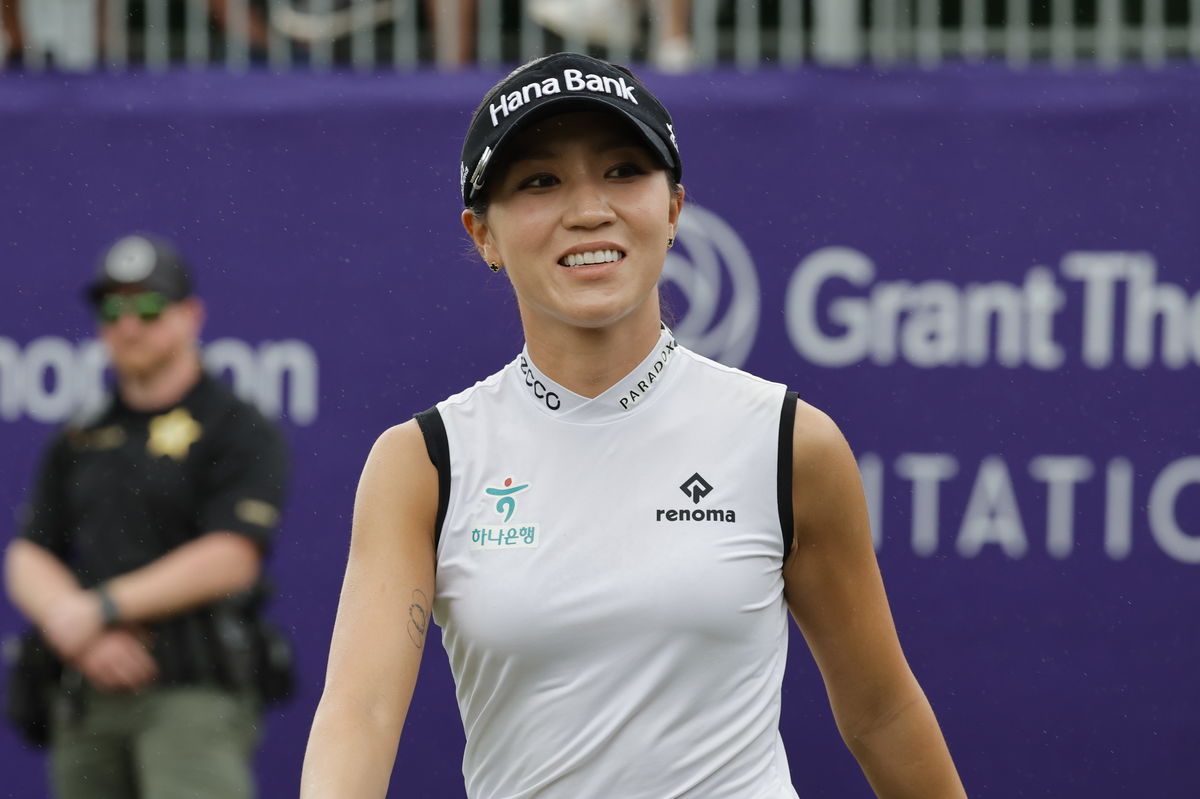
Imago
Dec 14, 2024; Naples, Florida, USA; Lydia Ko walks on the first tee during the second round of the Grant Thornton Invitational at Tiburon Golf Club. Mandatory Credit: Reinhold Matay-Imagn Images

Imago
Dec 14, 2024; Naples, Florida, USA; Lydia Ko walks on the first tee during the second round of the Grant Thornton Invitational at Tiburon Golf Club. Mandatory Credit: Reinhold Matay-Imagn Images
Over the years, LPGA broadcasts have long faced scrutiny for inconsistent coverage, leaving fans guessing when and where to watch their favorite players. “For so many sports, it’s easy to know when to turn on the TV or click open an app and find the players you want to see at predictable times. It’s really, really hard to do that today with women’s golf,” LPGA Commissioner Craig Kessler said earlier this year, highlighting the ongoing challenge. But it looks like things might be finally turning around.
Watch What’s Trending Now!
In a bold move that signals a shift in this issue, Golf Channel recently prioritized the LPGA’s International Crown, which is currently taking place in South Korea, over a PGA Tour event. Beth Ann Nichols, writer for GolfWeek, shared this on X a few minutes ago.
“Important programming note. The PGA Tour’s coverage of the Black Desert event was pushed to CNBC so that the semis of the International Crown could start on time on Golf Channel.”
ADVERTISEMENT
The International Crown, underway since October 23 at New Korea Country Club in Goyang-si, South Korea, is a biennial event, and the move from Golf Channel marks a significant moment for the LPGA. The semi-finals of the International Crown, which concluded a few hours ago, saw Team USA face Japan after finishing atop Pool A, while the World Team, leaders of Pool B, took on Australia from Pool A in the second semifinal. Ultimately, Team USA and Team Australia will advance to the finals, and the stage is now set for a showdown between these two teams.
It’s an important event, and the move from Golf Channel may be a small one. But it was crucial to give women’s golf the due recognition it deserves, not just for the event in itself but also for the message it sends about the visibility of women’s golf. And why not? We have seen tremendous changes in women’s golf over the years. Increase in prize money, better sponsors, number of players, and the talent they have brought over the years. But the visibility? It’s hardly changed.
The lack of substantial TV rights deals further adds to the issue. Lydia Ko pointed that out earlier in August, on the Luke Kwon Golf podcast, about how limited budgets restrict coverage and exposure. “Like, but we need more budget to have more cameramen, and then more airtime, and more network TV,” she said, asserting that the onus is not only on the players. Her simple message was — if you don’t put in the money, there will be no exposure either.
ADVERTISEMENT
Important programming note. The PGA Tour’s coverage of the Black Desert event was pushed to CNBC so that the semis of the International Crown could start on time on Golf Channel.
🙌🏻
— Beth Ann Nichols (@GolfweekNichols) October 26, 2025
And there’s evidence of that. ESPN has a deal with the LPGA that wraps up this season, but in contrast, they have a joint media rights deal with the PGA Tour that ends only in 2030. That’s enough to tell us that the LPGA clearly hasn’t received the same prioritization.
ADVERTISEMENT
In that light, Golf Channel’s decision to keep the International Crown semis on its main network rather than fully shifting coverage to CNBC is more than a mere scheduling tweak—it’s a tangible step toward leveling the playing field.
But the lack of visibility isn’t just about now having a scheduling time on TV. Many have hinted at other factors compounding the problem.
Top Stories
Scottie Scheffler Makes Critical Health Announcement After He Ended PGA Tour Hiatus

Tiger Woods & Co. Now Have to Think Twice Before Trash-Talking at TGL Following New Update

Lexi Thompson Branded ‘Self-Centered’ After Retirement Decision Led to Chaos & Confusion

Donald Trump’s Son Issues Statement on PGA Tour’s $20M Cadillac Championship Announcement

Decades-Old Artillery Found at Open Venue Sparks Emergency Evacuation

ADVERTISEMENT
Other factors affecting the LPGA’s visibility
Many have pointed out that even things like course setup and scheduling overlap with the PGA Tour events are adding to the trouble. “Course setup often contributes to the lack of visibility among fans,” Gabby Herzig highlighted on the Mixed Bag podcast a few weeks ago. She pointed out that if similar events occurred on the men’s side, there would be far more discussion about the difficulty and design of the courses, and how they separate the best players.
On the women’s side, however, such scrutiny rarely exists. The way courses are set up and also the ones that are chosen not only influence the competition but also the way fans experience and engage with the sport. Less challenging or less visually distinctive courses can make events feel less compelling, limiting both viewership and media coverage.
Herzig echoed Amanda Balionis‘ sentiment, which was similar, where she pointed out that “Fans turn on the PGA Tour because they want to see iconic venues like Pebble Beach, Augusta, or TPC Scottsdale…” Balionis made it clear that it’s as much about the course as it is about the competitors, which attracts fans. For the LPGA to grow its audience, tournaments need to be held on courses that have history and look visually engaging, so that they capture attention and invite viewers in.
ADVERTISEMENT
Ultimately, all of these factors are deeply interconnected. Without thoughtfully chosen venues and good investment in coverage, even the most talented players can struggle to gain recognition. Adjustments in these areas can help bridge the visibility gap and ensure women’s golf gets the attention it deserves.
ADVERTISEMENT
ADVERTISEMENT
ADVERTISEMENT

